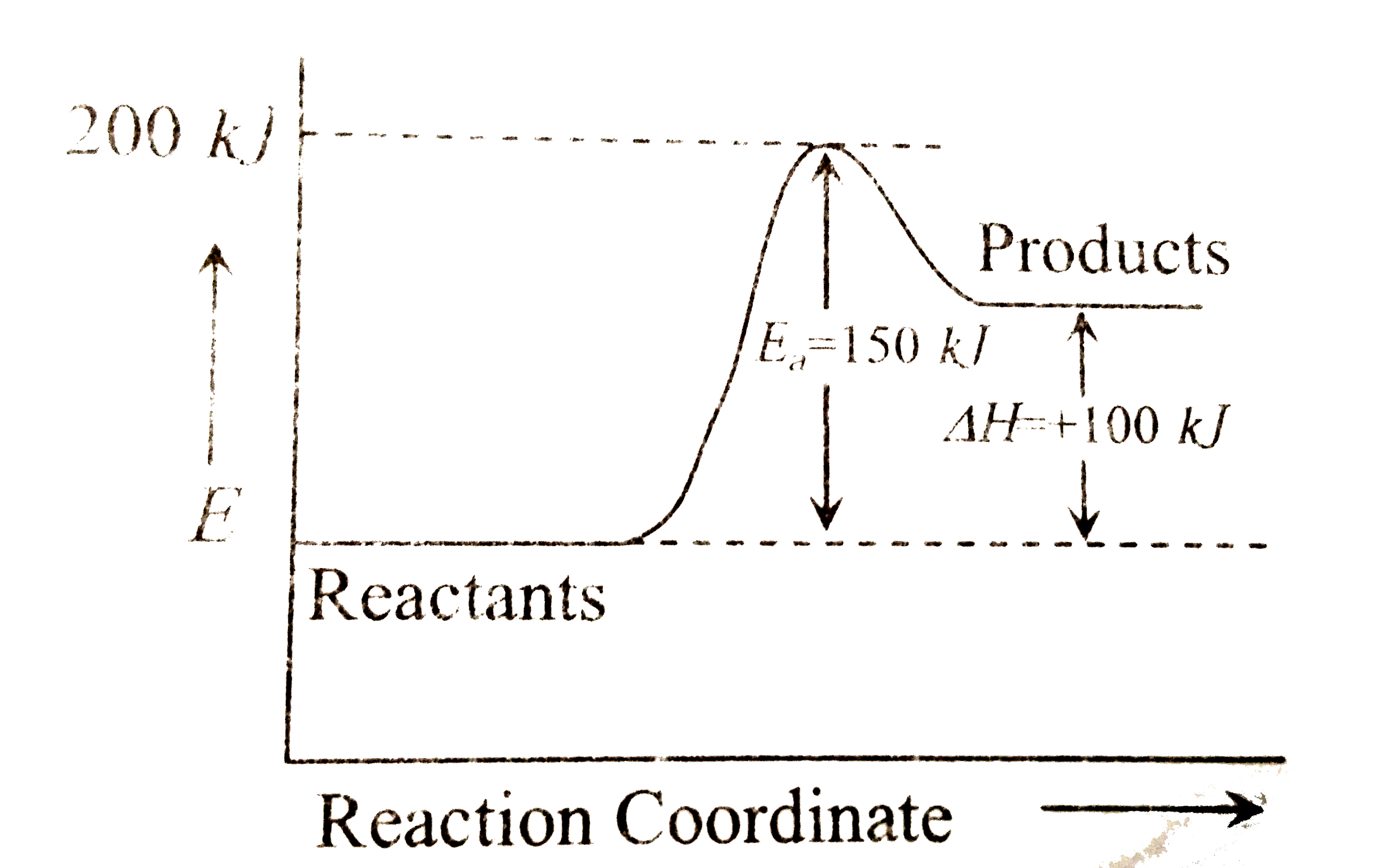In the given graph the activation energy , Ea for the reverse reaction will be

150 Kj
50 kJ
200 kJ
100 kJ
The correct Answer is:B
ΔH=Eaf−Eab
100=150−Eab
Eab=50 kJ
Topper's Solved these Questions
- BOOK - ERRORLESSCHAPTER - CHEMICAL KINETICSEXERCISE - NCERT BASED QUESTIONS (Photochemical Reaction)4videos
CHEMICAL KINETICS
- BOOK - ERRORLESSCHAPTER - CHEMICAL KINETICSEXERCISE - NCERT BASED QUESTIONS (Graphical Questions)7videos
CHEMICAL KINETICS
- BOOK - ERRORLESSCHAPTER - CHEMICAL KINETICSEXERCISE - NCERT BASED QUESTIONS (Rate Law and Rate Constant)106videos
CHEMICAL KINETICS
- BOOK - ERRORLESSCHAPTER - CARBOXYLIC ACIDSEXERCISE - Assertion & Reason5videos
CARBOXYLIC ACIDS
- BOOK - ERRORLESSCHAPTER - CHEMISTRY IN EVERYDAY LIFE EXERCISE - Assertion & Reason4videos
CHEMISTRY IN EVERYDAY LIFE
Similar Questions
An exothermic reaction X → Y has an activation energy 30 KJ mol−1 . If energy change ΔE during the reaction is -20 KJ, then the activation energy for the reverse reaction in KJ is __________ . (Integer answer)
View SolutionGiven the following diagram for the reaction A+B→C+D The enthalpy change and activation energy for the reverse reaction, C+D→A+B are respectively.
 View Solution
View Solution
Knowledge Check
- Question 1 - Select One
If activation energy, Ea of the reaction is equal to RT then
AThe rate of reaction will be independent on initial concentration of reactant.BThe rate constant becomes approximately equal to 37% of the Arrhenius constantCThe rate of reaction becomes infiniteDThe rate of reaction always be first order. - Question 2 - Select One
If a reaction A+B→C is exothermic to the extent of 30 kJ/mol and the forward reaction has an activation energy of 70 kJ/mol, the activation energy for the reverse reaction is
A30 kJ/molB40 kJ/molC70 kJ/molD100 kJ/mol - Question 3 - Select One
An exothermic reaction A→B has an activation energy of 17kJ per mole of A. The heat of the reaction is 40kJ. Calculate the activation energy for the reverse reaction B→A.
A60kJB57kJC75kJD90kJ
If a reaction A+B→C is exothermic to the extent of 30KJ/mol, the forward reaction has an activation energy 70KJ/mol. The activation energy for the reverse reaction is
View SolutionIf a reaction , A+B→C , is exothermic to the extent of 30kJ/mol and the forward reaction has an activation energy 70kJ/mol, the activation energy for the reverse reaction is
View SolutionAn endothermic reaction A → B has an activation energy as × kJ mo1−1 of A. If energy change of the reaction is y kJ, the activation energy of the reverse reaction is :
View SolutionIn an exothermic reaction A → B, the activation energy of reverse reaction is twice that of forward reaction. If enthalpy of the reaction is -80 kJ mol−1 , the activation energy of the reverse reaction is
View SolutionAn exothermic reaction A→B has an activation energy of 17kJ per mole of A. The heat of the reaction is 40kJ. Calculate the activation energy for the reverse reaction B→A.
View Solution

